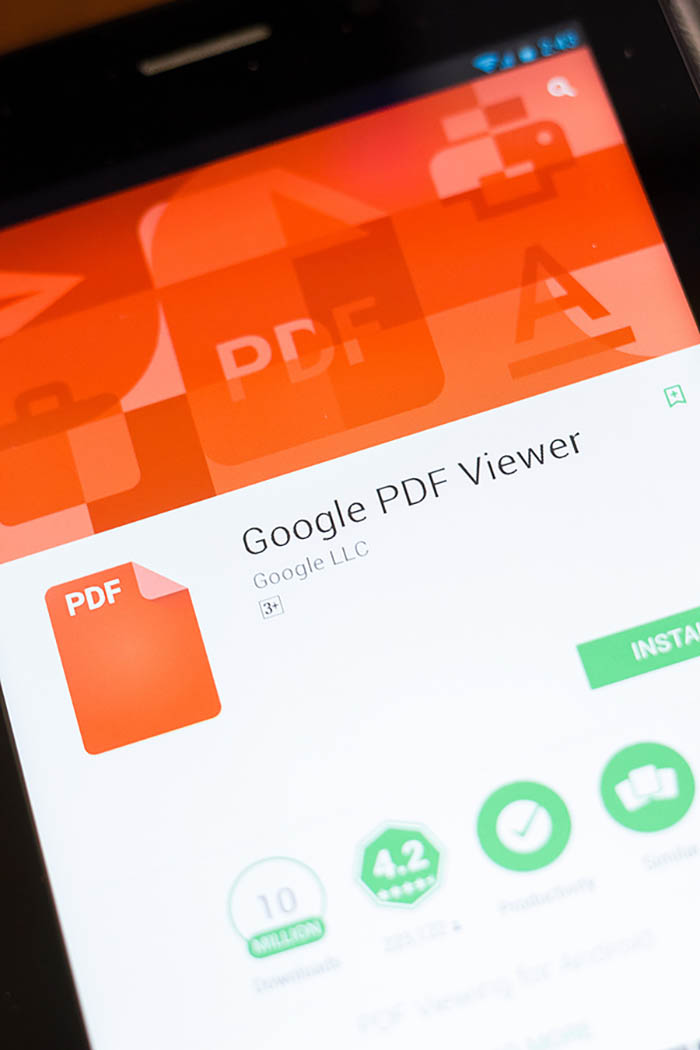When it comes to using PDFs on your small business website, there are two schools of thought: “absolutely” and “no, never.” Proponents say PDFs make it easier to disseminate lots of information at once; opponents opine that PDFs make your site glitchy and tend to turn website viewers off.
So who’s right, and who’s wrong?
It’s a little complicated. But here are our thoughts.
PDF Basics
Adobe’s Permanent Document Format, which we now just refer to as PDF, has roots going back to 1991, created with the hopes that it would “enable anyone to capture documents from any application, send electronic versions of these documents anywhere, and view and print them on any machine.”
While early versions of PDFs were basically just “pictures” of a page, today’s PDFs are fully interactive and able to support links, buttons, form fields and more. They allow for electronic signatures and can even contain audio and video.
PDFs are practically magic — so why wouldn’t you want to include them on your website?
PDF Problems
Never-PDFers cite the following issues with including PDFs on your website:
- The large file size can cause older devices to lag.
- They’re notorious for not downloading correctly.
- PDFs are not always mobile-friendly.
- They’re not automatically usable for people who need assistive technology such as screen readers and alt text.
- They can disrupt and annoy the reader.
PDF Plusses
Those are valid points, but most of those issues are surmountable with a bit of know-how. Meanwhile, PDF fans would like to draw your attention to the following benefits:
- PDFs make it easy for people to view and print static documents such as menus, assembly instructions or white papers.
- PDFs are able to be encrypted or password protected, making them more secure than regular web content.
- Long content that will take the reader more than a few moments to get through can be delivered as a PDF, making it simpler for them to go back to it when they have time.
Best Practices for Using PDFs on Your Small Business Website
If you’re not a PDF person, that’s OK. No harm, no foul. The vast majority of your audience won’t notice. If you’re on the fence or ready to jump in, however, here are some PDF best practices:
Give your reader an option. Display your website content as usual and include a link to a PDF that they can choose to use.
Keep file sizes as small as you can without risking quality. Audio and video clips take up a lot of bandwidth, so if they’re not absolutely indispensable, don’t include them in your PDF.
Make it clear that the link is leading to a PDF and tell your reader what to expect. A simple annotation saying “Clicking this link will open a PDF in another tab” or just “PDF” in parentheses next to the descriptor text will keep readers from being surprised or frustrated.
Don’t rush to update your PDFs to the newest version. When was the last time you updated your PDF reader? It’s not something the average layperson keeps on top of, so wait a while being updating your PDFs so stragglers have time to catch up.
Make sure your PDF is easy to navigate. One of the biggest issues people have with PDFs is they can be brutal to navigate. Be sure to include things like forward and back buttons, a basic search function and a clickable table of contents.
Are You Ready to Be a PDF Pro?
Despite research to the contrary, our independent review found no good reason not to use PDFs on your small business website when they’re warranted. As long as you put best practices in play, the occasional PDF will be a boon, not a bust!
Mischa Communications has the scoop on all the latest small business trends and technology. Let’s talk!
